Abstract
This survey was undertaken to assess the frequency of some of the so-called release phenomena and iterative activities in an aged psychiatric population. Three groups of geriatric psychiatric patients with diagnoses of (I) organic brain syndrome, including senile dementia (56), (II) functional psychoses, predominantly schizophrenia (51) and (III) chronic schizophrenia never treated by neuroleptics or other biologic agents (16), were compared with (IV) a control group of 32 elderly people in good physical and mental health.
In general, for the manifestations studied, the geriatric psychiatric patients suffering from an organic brain syndrome and treated with neuroleptics differed notably from the control group. This latter group, although older, had few neurological signs of senescence and the spontaneous oral movements usually associated with the use of neuroleptics were absent. Release phenomena such as the grasp and pouting reflexes, as well as the stereotyped activities, were encountered significantly more frequently in patients with an organic brain syndrome than in the two other groups of patients. Our survey has yielded limited results with regard to the possible influence of type of illness and neuroleptic treatment on the incidence of release phenomena and iterative activities.
Full text
PDF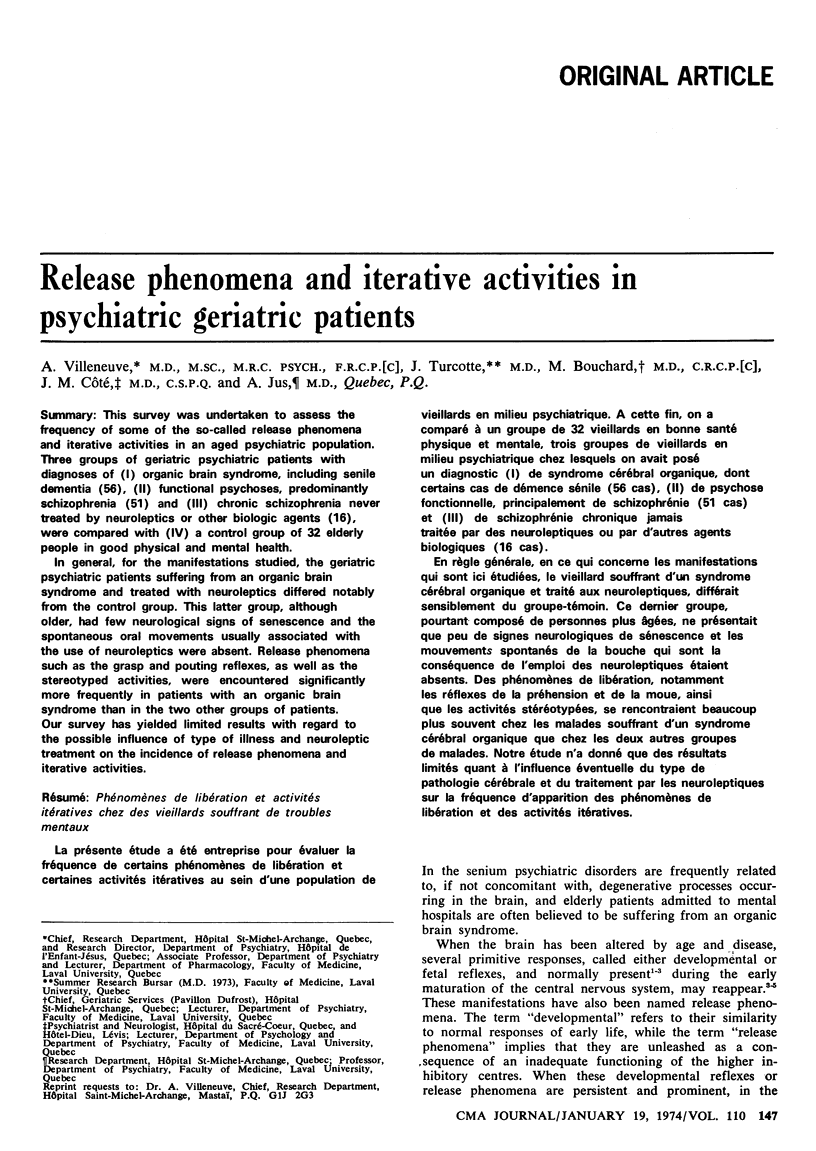
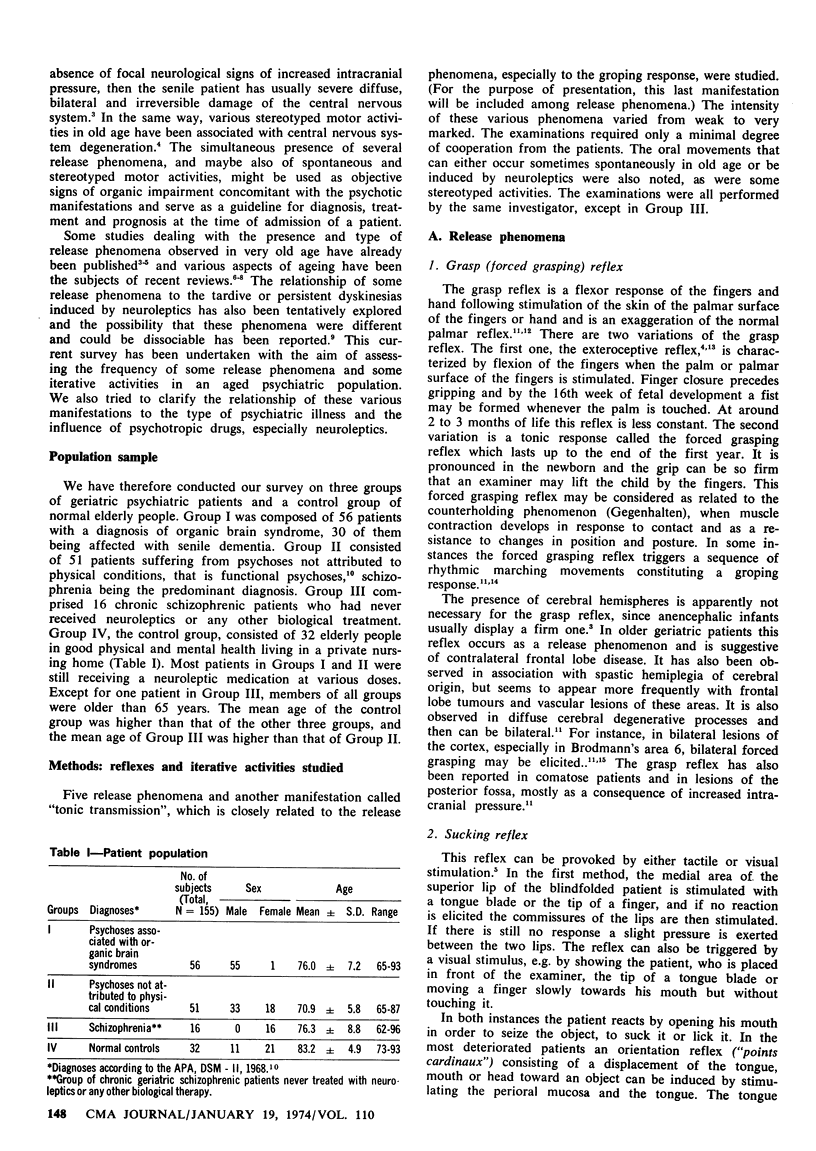
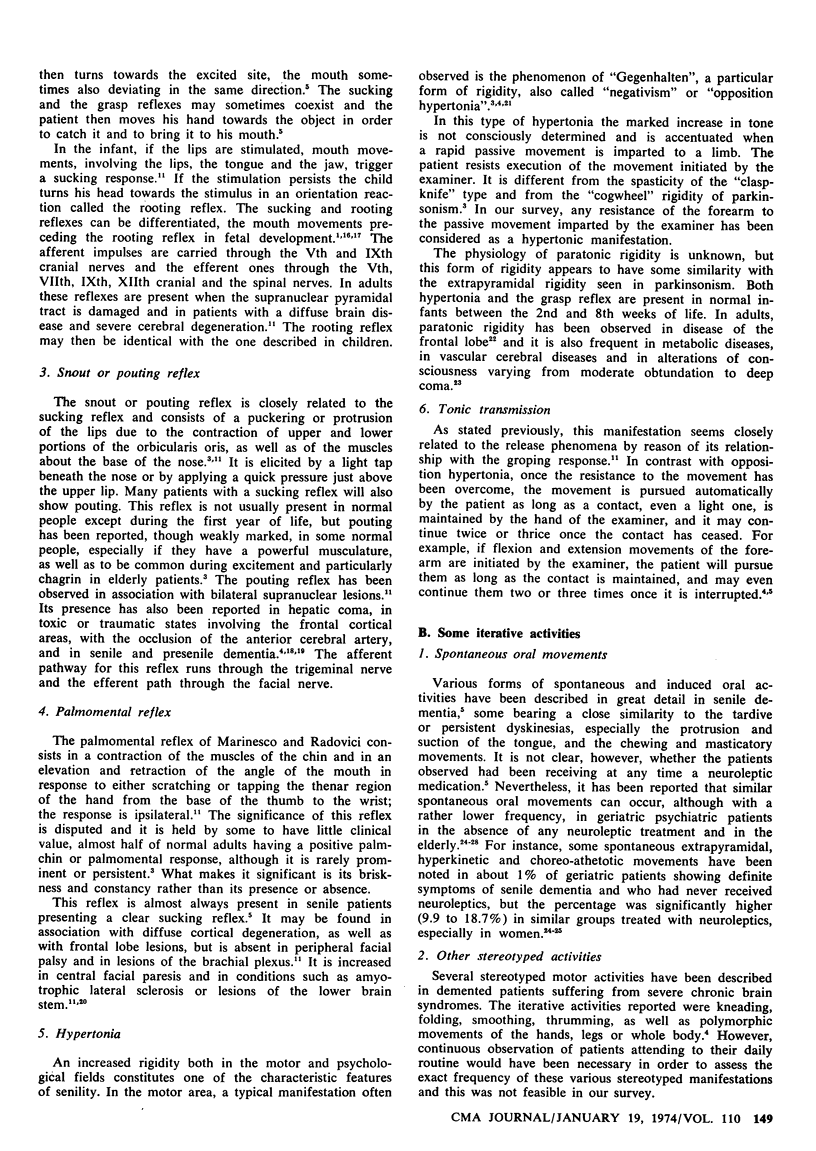
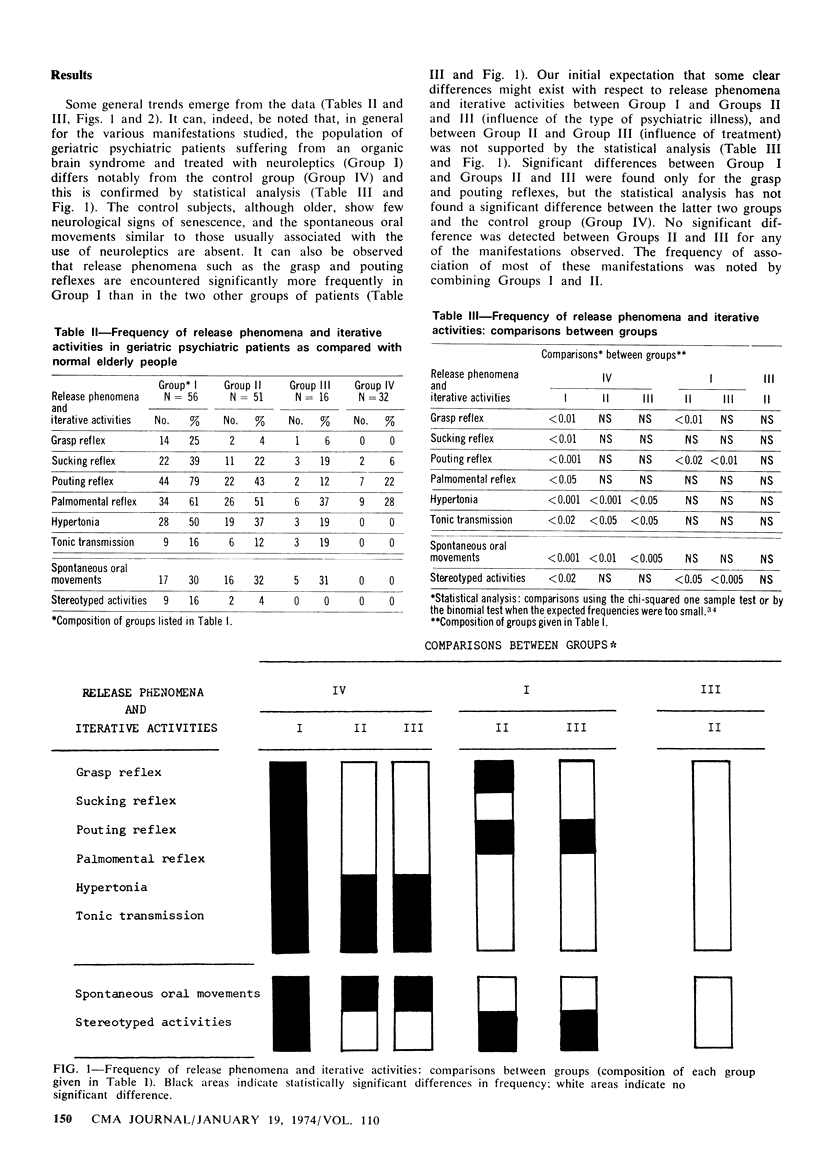
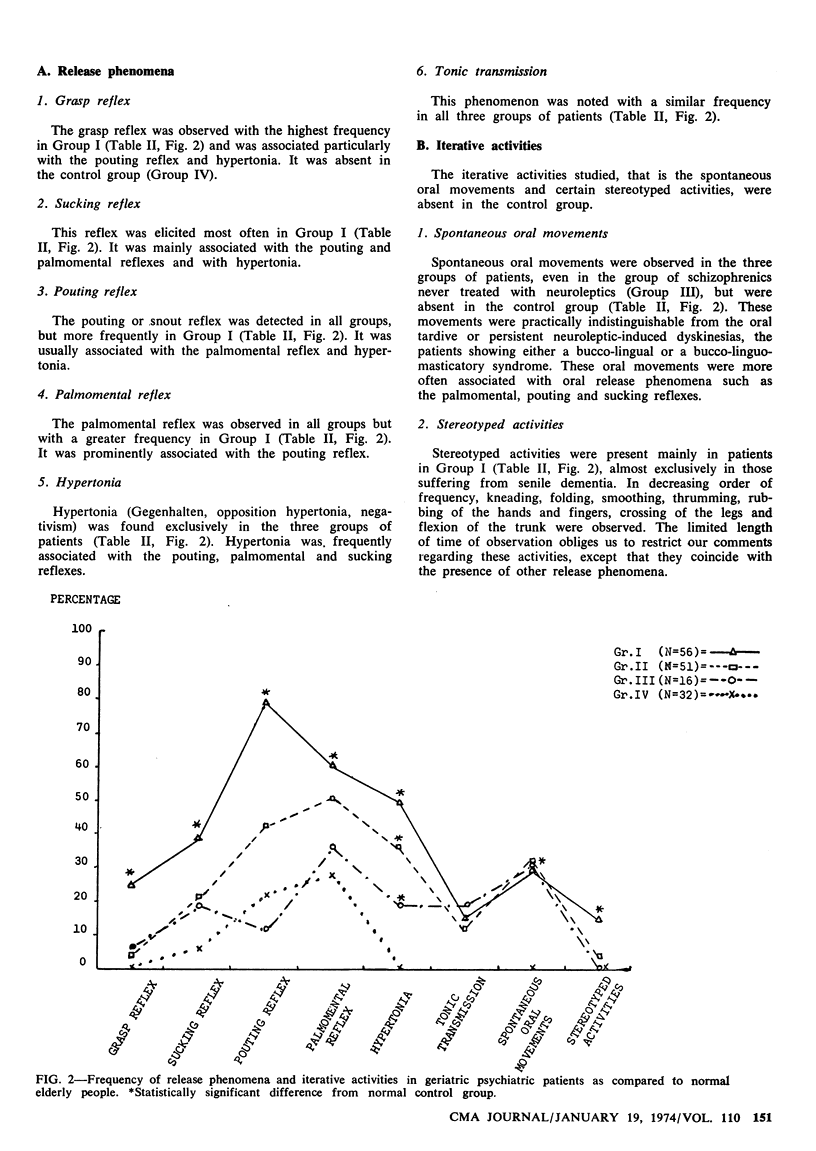
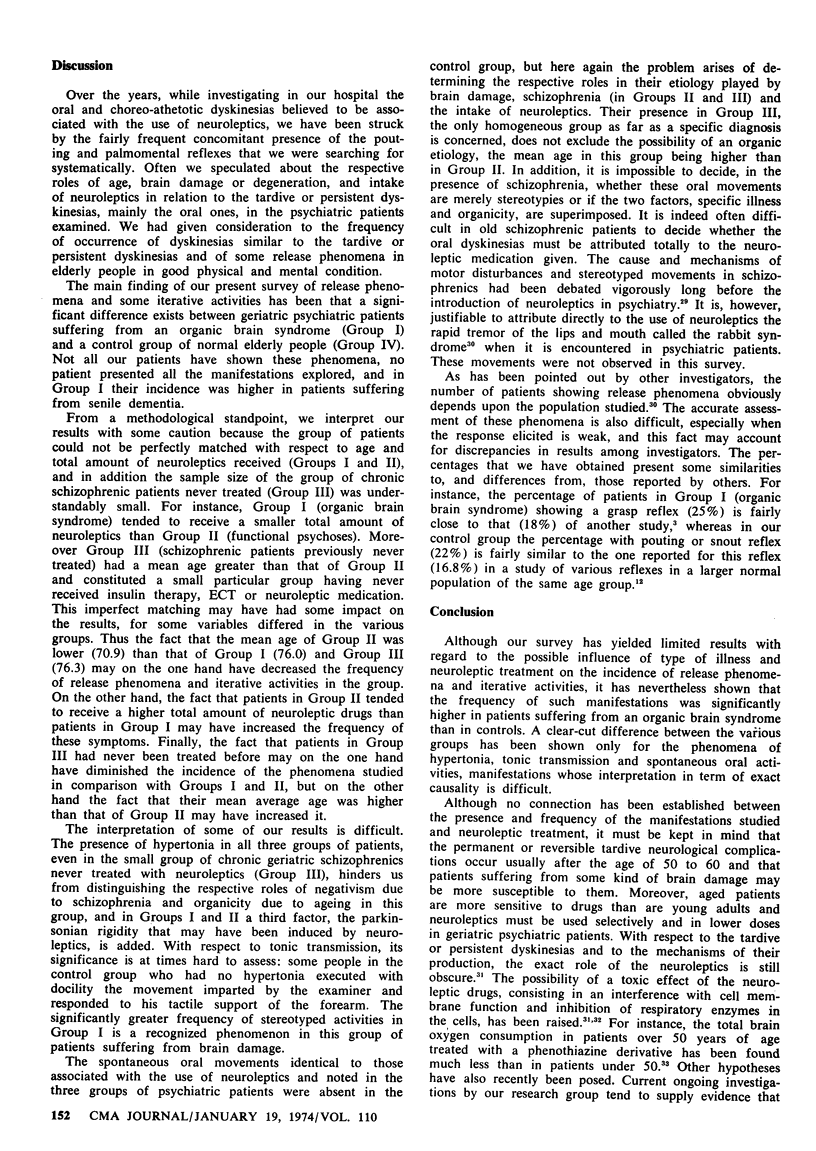
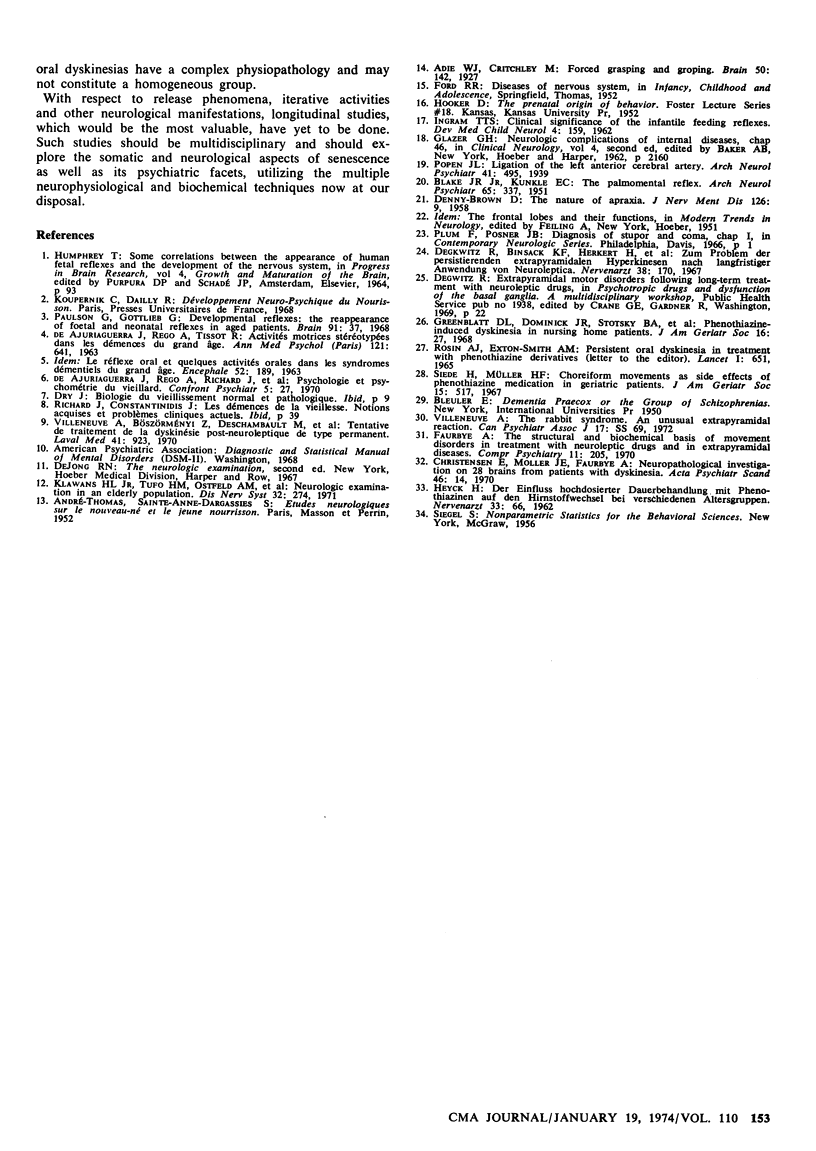
Selected References
These references are in PubMed. This may not be the complete list of references from this article.
- BLAKE J. R., Jr, KUNKLE E. C. The palmomental reflex; a physiological and clinical analysis. AMA Arch Neurol Psychiatry. 1951 Mar;65(3):337–345. doi: 10.1001/archneurpsyc.1951.02320030074008. [DOI] [PubMed] [Google Scholar]
- DENNY-BROWN D. The nature of apraxia. J Nerv Ment Dis. 1958 Jan;126(1):9–32. doi: 10.1097/00005053-195801000-00003. [DOI] [PubMed] [Google Scholar]
- Degkwitz R., Binsack K. F., Herkert H., Luxenburger O., Wenzel W. Zum Problem der persistierenden extrapyramidalen Hyperkinesen nach langfristiger Anwendung von Neuroleptika. Nervenarzt. 1967 Apr;38(4):170–174. [PubMed] [Google Scholar]
- Faurbye A. The structural and biochemical basis of movement disorders in treatment with neuroleptic drugs and in extrapyramidal diseases. Compr Psychiatry. 1970 May;11(3):205–225. doi: 10.1016/0010-440x(70)90166-5. [DOI] [PubMed] [Google Scholar]
- Greenblatt D. L., Dominick J. R., Stotsky B. A., DiMascio A. Phenothiazine-induced dyskinesia in nursing-home patients. J Am Geriatr Soc. 1968 Jan;16(1):27–34. doi: 10.1111/j.1532-5415.1968.tb03966.x. [DOI] [PubMed] [Google Scholar]
- Klawans H. L., Jr, Tufo H. M., Ostfeld A. M., Shekelle R. B., Kilbridge J. A. Neurologic examination in an elderly population. Dis Nerv Syst. 1971 Apr;32(4):274–279. [PubMed] [Google Scholar]
- Leibowitz U., Sharon D., Alter M. Geographical considerations in multiple sclerosis. Brain. 1968 Mar;91(1):37–52. doi: 10.1093/brain/91.1.37. [DOI] [PubMed] [Google Scholar]
- Siede H., Müller H. F. Choreiform movements as side effects of phenothiazine medication in geriatric patients. J Am Geriatr Soc. 1967 Jun;15(6):517–522. doi: 10.1111/j.1532-5415.1967.tb01191.x. [DOI] [PubMed] [Google Scholar]
- Villeneuve A., Böszörményi Z., Deschambault M., Lachance R. Tentative de traitement de la dyskinésie post-neuroleptique de type permanent. Laval Med. 1970 Sep;41(7):923–933. [PubMed] [Google Scholar]
- de AJURIAGUERRA, REGO A., TISSOT R. [Stereotyped motor activities in dementias of advanced age]. Ann Med Psychol (Paris) 1963 May;121(1):641–664. [PubMed] [Google Scholar]


